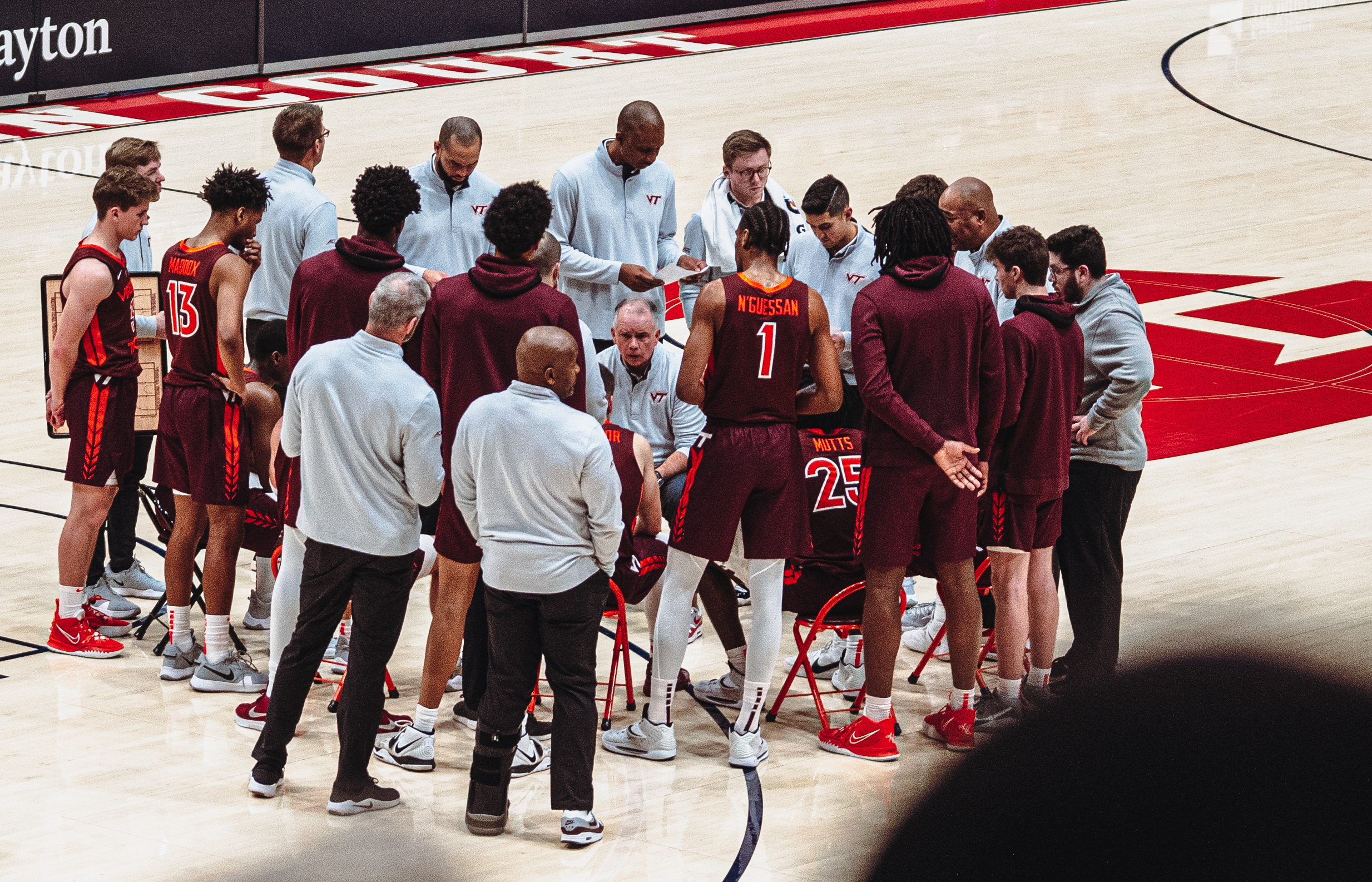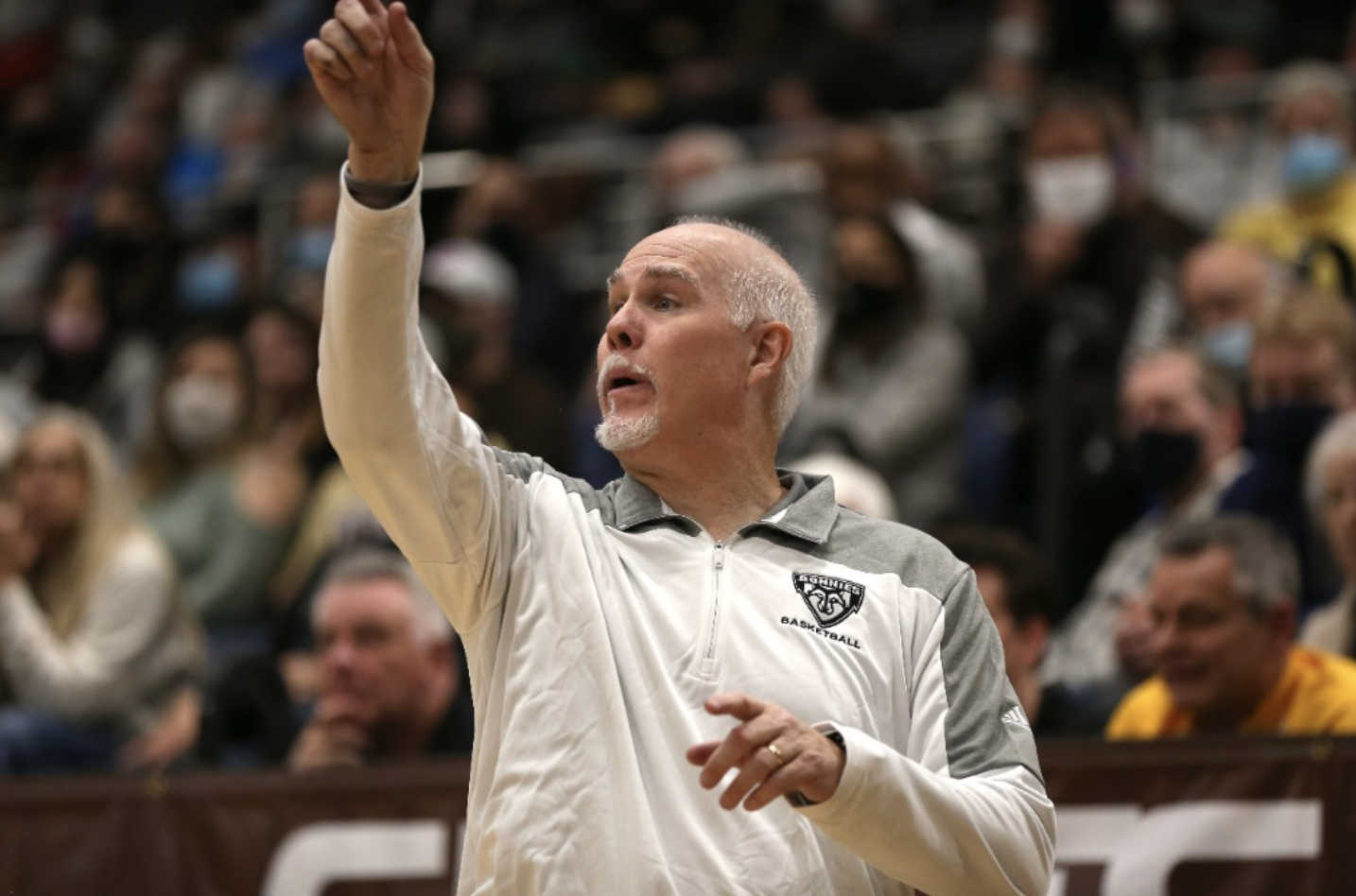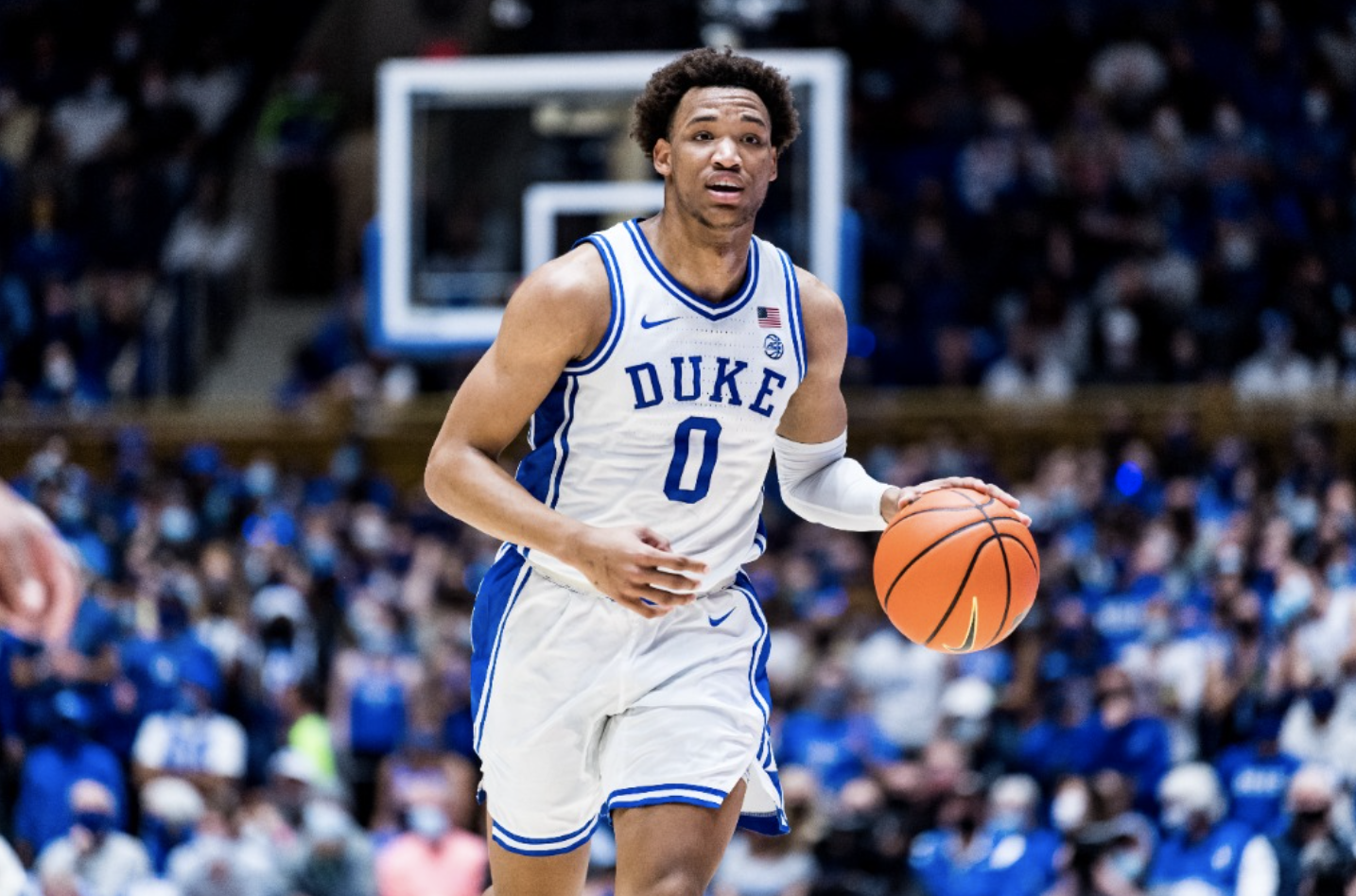
Sitting at 7-4 (0-1 ACC) after the first 11 games, Virginia Tech men’s basketball has its back against the wall.
Mike Young challenged his team with the most difficult non-conference schedule the program has seen since joining the ACC in 2004, but the results have been disappointing thus far.
Tech went 0-2 in Brooklyn in losses to Memphis and Xavier (a one-point margin). After a Big Ten/ACC Challenge win at Maryland, the Hokies got blown out of their own gym in a 19-point loss at Wake Forest. Then last Sunday, the team struggled at Dayton in a five-point defeat.
There were a few common themes in each of the losses, highlighted by poor offensive play due to the inability to handle the defense’s pressure. Point guard Storm Murphy, who was an important contributor for Young at Wofford, hasn’t had the impact many expected. He’s had a tough time defending high-caliber players at times, and when teams stress him out and wear him down (see Dayton), it’s the key to stopping Tech’s offense.
That’s something Flyers coach Anthony Grant mentioned after his team’s win: They wanted to make life as difficult for the Hokies as possible, and they accomplished that goal.
Slow starts have been a factor, too. In each of the four losses, the team has fallen behind in the first half by double digits at least once. It’s taken the offense about six minutes in each half to find its rhythm, which isn’t good enough. Essentially, the Hokies have been digging themselves out of a hole since for almost two-thirds of each game.
And then there’s just missing easy and open shots. Everyone, from Justyn Mutts and Keve Aluma to Hunter Cattoor and Nahiem Alleyne, has struggled in moments and simply didn’t convert opportunities they’ve become accustomed to. Aluma’s from around the rim, Alleyne’s from behind the arc. Those empty trips down the floor add up.
There are many options Young can take to sparking a new life into this group. Rotating the lineup, adjusting the tempo or tweaking some sets could be a start. Whatever the answer is, Tech’s been given time to find it.
The team had four days off after traveling to Dayton on Sunday before Friday’s clash with St. Bonaventure, and it’s the first time the Hokies have really been able to practice without thinking about an opponent. They needed that time, as Young has alluded to.
Three games – St. Bonaventure (Friday in Charlotte), at Duke (Wednesday) and at North Carolina (Dec. 29) stand between Virginia Tech and the new year. The program needs some positive momentum moving forward. Can the Hokies respond with their backs against the wall?
St. Bonaventure
A game that has been played 16 times since 1973, the Hokies and Bonnies were once A-10 counterparts. From 1995 to 2000, the two played as league foes five times. It’s an all-time series Tech leads 10-6, and it’s the first time the two programs have met since Nov. 2011, when VT won 73-64 in Blacksburg.
Mark Schmidt is in his 15th season leading the program and has taken the Bonnies to three NCAA Tournaments, including last year after they won the A-10.

Where Dayton was very young, the youngest team in the country, per KenPom, St. Bonaventure (8-2) is an older, veteran-laden group. The Bonnies start five seniors, and KenPom has them at No. 21 in terms of experience. Here is their starting five:
Kyle Lofton (6-3, G, Sr.)
Jaren Holmes (6-4, G, Sr.)
Dominik Welch (6-5, G, Sr.)
Jalen Adaway (6-5, G, r-Sr.)
Osun Osunniyi (6-10, F/C, Sr.)
St. Bonaventure is similar to Virginia Tech in terms of playing more of a slower pace, but being pretty efficient on both ends of the floor. The Bonnies handle the ball really well and rarely turn it over, but other than that, they’re average in most other categories. They aren’t a very tall team, which bodes well for Virginia Tech.
One of St. Bonaventure’s weaknesses is defending the three-point arc. The team doesn’t allow teams to shoot a high percentage – about 33.5% per game, which is 193 in D-I, so average – but 40.4% of its opponents’ points come from deep, which is tenth in the country.
On the flip side, teams usually score about 44.6% of their points on two-point baskets vs. the Bonnies, which is No. 318 in the nation. If Virginia Tech’s motion offense is on, it’ll get open looks. This is a game where the Hokies need to take advantage of those opportunities.
On the offensive end, the Bonnies score 56% of their points on two-point buckets, good for 68th in the country. They aren’t a three-point shooting team, so Tech is going to have to be solid on the interior.
St. Bonaventure actually goes to its bench less than Tech does, and this is an experienced roster that has played together for a good amount of time. The Bonnies are No. 352 in bench minutes, per KenPom, and 14th in minutes continuity (78.3%), meaning they rarely rotate their players and almost everyone returned to their roster from last season.
In the latest NET rankings, St. Bonaventure is No. 83. Virginia Tech is No. 36. This is an opportunity for a Quadrant 2 win for the Hokies on a neutral floor, but most importantly, a chance to get some desperately-needed momentum heading into ACC play.
Duke
In his final season at the helm of the Blue Devils, Mike Krzyzewski has one of his better teams in recent memory. They are talented in almost every aspect of the game.
A top-20 team in offensive and defensive adjusted efficiency, Duke (9-1) pushes the tempo and can score. The team doesn’t turn the ball over (fifth in NCAA) and has a well-balanced offense that can score inside and out.
This is also a tall and lengthy team, and it’ll pose Virginia Tech a lot of problems. Here’s Duke’s starting five:
Jeremy Roach: 6-2, G, So.
Trevor Keels: 6-5, G, Fr.
Wendell Moore Jr.: 6-5, F, Jr.
Paolo Banchero: 6-10, F, Jr.
Mark Williams: 7-1, C, So.

Banchero might be the best player in college basketball, but teams still have to account for the other four guys on the floor. Moore is really dangerous and is one of the best shooters in the country, while Mark Williams has the seventh-best offensive rating in the nation, per KenPom. He’s a good shot blocker and rarely turns it over, too.
This isn’t going to be easy for Virginia Tech, especially playing in Cameron Indoor Stadium. The Hokies have just one win in Durham in 24 tries, which game on Jan. 6, 2007. Lots of memories come flooding back from that game, particularly Deron Washington tea bagging Greg Paulus, blocking a last-second shot attempt by the Blue Devils and Tech forcing 22 turnovers to its own seven. The Hokies have lost in their last eight trips to Duke since.
The Blue Devils are currently No. 8 in the NET, so this is a huge opportunity for Mike Young’s team to get a statement win. The Hokies will have to score inside, meaning getting Keve Aluma going, and they can’t afford to fall behind early. That’s kryptonite in front of the Cameron Crazies.
Taking care of the ball and forcing turnovers might be the most important aspect to this game. Defensively, Virginia Tech can hang in there with Duke. Whether the team can continue to match the Blue Devils on the offensive end will the deciding factor.





 Print
Print







I was hoping Storm would be the penetrating guard picking up fouls. However, he seems tentative to go inside aggressively. Young will figure it out.
Backcourt play is just killing us. The guards need to penetrate to set up high percentage shots. Ours can’t. It’s going to be a long season. Wake by 19 in Cassell? Uh Oh.
Props to working “tea-bagging” into your analysis. That’s the unique content I am here for.
Storm is a good player, think he has lost his feel. He played well against D1 talent at wofford, but now he has to do it every night and doesn’t have the benefit of getting his rythm and confidence back against less competition, partiality less lengthy competition. Problem is we don’t have strong / experienced enough backup point guard options to help Storm and the team. It is throwing the whole system off at this point. Pedulla has talent but is a true freshman. MY and Storm will figure it out.
Err “particularly less lengthy”..
Based on what I’ve seen so far I’m unfortunately expecting losses in all 3 games….but hoping I’m wrong!
Go Hokies!
Sadly I am too, hoping but not at all expectant. Really not playing like the team we thought we had.
Nice analysis, David. Watching Storm get manhandled in the backcourt has been painful to watch, as has Aluma’s inability to convert buckets inside. There’s certainly no lack of effort on Keve’s part; he’s always digging hard on both ends of the floor, and keeps trying to contribute even when he’s not scoring. Is there any point in doing a deeper dive on Aluma’s problems vs. taller, stronger players? On the surface, it’s simple and obvious: they’re taller and stronger, and Keve hasn’t figured out a way to overcome those disadvantages. So, what do those players do who still find ways to score even when they’re giving up pounds and inches? What can Aluma do to tweak his game around the basket?
Thanks for reading. I agree… Aluma has missed easy ones around the rim that just don’t make sense, that he made routinely last season. Maybe after the next three games I’lll do an analytical dive into the play of Aluma and Murphy and how he’s played vs. different competition.
First point- KEVE is a natural 4, not a 5 where we r forced to play him due to lack of player development.
In P5 the centers are big and strong and tend to jam hard around the basket. Our guy is a finesse center. Good with both hands, fair range, good rebounder but relatively weak in the paint…not a quick jumper.